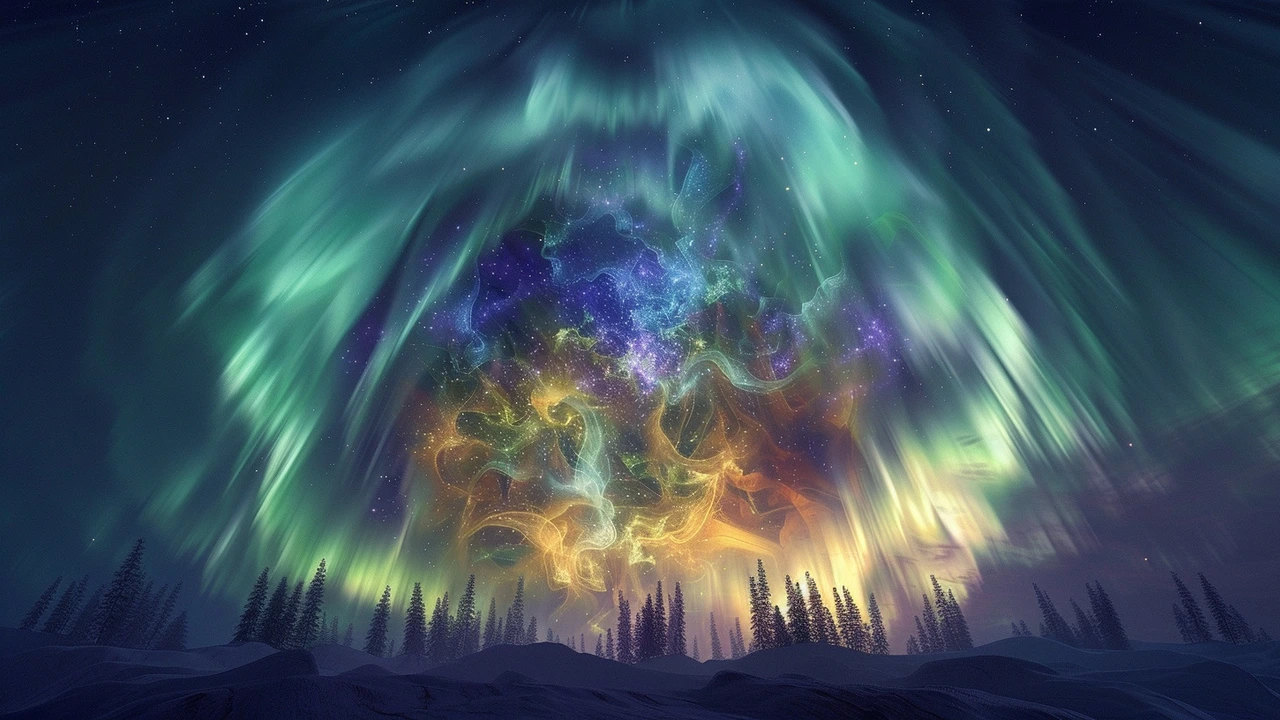Stunning Aurora Borealis Enthralls Observers Following Recent Geomagnetic Storm

The Enigmatic Beauty of the Northern Lights
The recent geomagnetic disturbances have served as a powerful catalyst in showcasing one of nature's most artistic displays: the Aurora Borealis or Northern Lights. This celestial phenomenon occurs high in the Earth's atmosphere when bursts of solar particles collide with magnetic fields. Such a vivid spectacle was recently visible more strongly in several northern regions, much to the delight of those near and far. A geomagnetic storm, strong enough to alter terrestrial magnetic fields, has evidently reinforced the visibility and intensity of these auroras, stirring excitement and curiosity worldwide.
Benjamin Williamson, a Portland, Maine-based photographer, captured this natural marvel with a technique known as long-exposure photography—which helps to brightly bring out the colors and patterns of the lights amid the cover of night. Williamson shared that viewing and capturing this spectacle was 'one of the most incredible things I've ever seen' accompanied by a sense of 'awe and wonder'. The image, depicting an ethereal green aura around a quaint lighthouse, was not edited, retaining the pure essence and beauty of the aurora.
Understanding Geomagnetic Storms
Geomagnetic storms are temporary disturbances of the Earth's magnetosphere caused by a solar wind shock wave and/or cloud of magnetic field that interacts with the Earth's magnetic field. The increase in solar wind pressure initially compresses the magnetosphere. The solar wind's magnetic field interacts with the Earth's magnetic field and transfers an increased amount of energy into the magnetosphere. Both solar wind pressure and magnetic interaction are important in enhancing the geomagnetic activity that causes auroras.
While the scenes they create are enchanting, geomagnetic storms can also have more disruptive effects such as interfering with satellite operations, communication systems, and even causing power outages. The K-index, a common measure used to describe the magnitude of geomagnetic storms, likely reached a high value during this recent storm, indicating its strength and potential for widespread auroral activity.
Photographing the Northern Lights
For photographers and skywatchers aspiring to capture the Northern Lights, the convergence of the right conditions can result in awe-inspiring imagery. High-quality cameras with manual settings allow photographers like Williamson to adjust aperture, exposure time, and ISO to competently record the intensity and motion of the auroras. Though patience and sometimes bracing cold environments are part of the challenge, the reward of capturing such pristine natural artistry is unparalleled.
Strategically, locations with minimal light pollution and clear skies enhance the viewing experience, as demonstrated by Benjamin Williamson's photo in Portland, displaying the vivid lights in stark contrast against a dark, serene backdrop.
The Global Reception and Significance
Globally, the allure of the Northern Lights has made them a bucket list item for many travelers. This fascination is matched by cultural and scientific communities alike. Various cultures interpret the lights through unique mythologies and legends, while scientists continue to explore the intricate dynamics between solar winds and our planet’s magnetic shield.
The recent geomagnetic storm and consequent dazzling display of auroras are not just a treat to the eyes but also a reminder about the dynamic and ever-changing nature of planet Earth's relationship with its cosmic environment. This incident offers another profound example of why preserving dark skies and reducing light pollution are crucial for future generations.
Write a comment